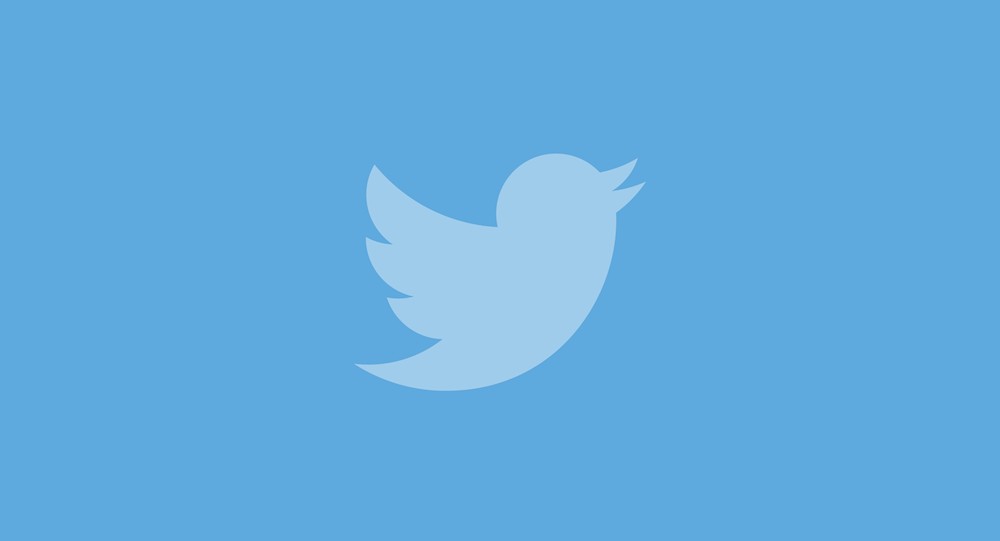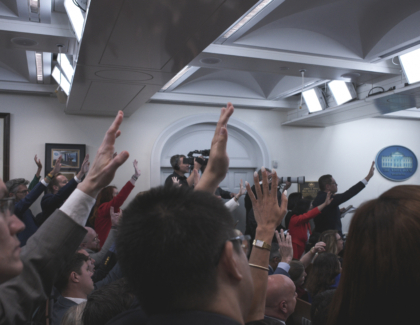Sign up for the daily CJR newsletter.
If you’ve spent any time on social media in the past few weeks, you’ve probably heard about BlueSky, the new social platform that Jack Dorsey launched while he was still the chief executive of Twitter (he also sits on BlueSky’s board of directors). The service recently opened up to a larger number of invitation-only beta testers, and some prominent Twitter users have set up accounts there, including Senator Ron Wyden, Representative Alexandria Ocasio-Cortez, billionaire Mark Cuban, and popular accounts such as Dril. It’s the latest contender in what seems like a race to replace Twitter, which has been lurching from crisis to crisis under new owner Elon Musk. But do we really need a replacement for Twitter? And if so, will this new platform somehow be able to reproduce just the positive aspects of Twitter, or will it wind up re-creating all the negative aspects as well?
Dorsey first mentioned BlueSky in 2019, with a tweet saying that Twitter planned to fund “a small independent team of up to five open source architects, engineers, and designers to develop an open and decentralized standard for social media.” Dorsey noted that in the early days of Twitter, the network allowed developers and services to plug in to its systems easily and extend them, to the point where “many saw its potential to be a decentralized internet standard,” like email. For a variety of reasons, Dorsey added, “we took a different path and increasingly centralized Twitter.” That process has continued since Musk took control. Twitter now charges anyone who wants to plug in to the network thousands of dollars (although Musk recently announced that emergency services will not have to pay).
Dorsey said he was inspired to take an open-source, distributed approach to a social network in part by reading a piece that Mike Masnick of Techdirt wrote for the Knight First Amendment Institute. In that essay, entitled “Protocols, Not Platforms: A Technological Approach to Free Speech,” Masnick argued that in response to concerns about hate speech and other forms of harassment, many social networks focused on moderation and other attempted solutions, but many of these “will make the initial problems worse or will have other effects that are equally pernicious.” Masnick suggested that instead of being closed platforms owned by a single entity such as Twitter or Facebook, social networks should be open protocols, allowing users to choose, just as they can choose a different email client or Web browser.
BlueSky isn’t the only one trying to become the decentralized, open-source network of choice. A platform called Mastodon has attracted a number of former Twitter users over the past year (although those numbers have fallen recently, according to Wired). Mastodon is also based on an open protocol, known as ActivityPub, which allows anyone to develop their own clients and interact or “federate” with others that use the same protocol (unfortunately, while BlueSky and Mastodon are both based on open protocols, they don’t use the same one—the creators of BlueSky decided to build their own, called Authenticated Transfer).
In addition to these, there are other smaller platforms and networks such as Nostr, which Dorsey and other prominent tech users such as Edward Snowden often post on. It uses a system of open relays and public-key cryptography, and the name is an abbreviation of Notes and Other Stuff Transmitted by Relays. Last year, Dorsey gave fourteen bitcoin, worth about $250,000, to the founder of Nostr, known only as @fiatjaf. There are other would-be Twitter replacements that aren’t based on open-source protocols, such as Post.news, which was founded by Noam Bardin, the chief executive of driving app Waze, which was acquired by Google in 2013 for $1.3 billion. Post.news is focused primarily on news consumption, and users can earn points for reading articles through the app, which can be redeemed for paywalled articles (Musk recently said that he plans to add micropayments for articles).
Each network or platform seems to have developed a slightly different culture, in some cases because of the way they are structured. Mastodon, for example, is seen by many as more appealing to computer nerds than to the usual Twitter user, because those joining have to pick a specific server or “instance” to create an account on, and following or seeing posts from users on other instances can be difficult. Each instance can also have its own rules about how users should behave (I wrote for CJR in November about some of the tension over how some journalists were using the network). Mastodon’s creator, a programmer named Eugen Rochko, recently announced that new users will now be added to a default server rather than being forced to choose, to lower the barriers to entry.
BlueSky’s vibe, if you will, is much closer to the original chaotic culture of Twitter. There are few rules, and so there is a free-for-all feeling to a user’s feed—to take just one example, many users have chosen to call posts on BlueSky “skeets,” despite the fact that chief executive Jay Graber has begged them not to. Even some of the service’s recent failures are kind of interesting. Not everything goes, however: Graber said the network is trying to keep nudity out of the “What’s Hot” feed, since it threatened to take over that feature (users can choose different settings for how much nudity they want). BlueSky is a public benefit corporation, which some hope might counter the evils of a commercial focus on social media, and the company has said moderation tools will also be customizable.
Will any of these services come to replace Twitter? That’s almost impossible to say, in part because Twitter’s own rise to prominence was so unpredictable. It began as a weird social toy that nerds in San Francisco played with, but then somehow it tapped into a broader need, without even knowing it, and users took the network and turned it into what they wanted it to be, adding features such as the @ mention, the hashtag, the retweet—all of which came to be synonymous with Twitter, but were not invented by it. The emergence of a multibillion-dollar media entity from total chaos, which seemed to take even Twitter’s founders by surprise, is why Facebook founder Mark Zuckerberg referred to Twitter as a “clown car that fell into a gold mine.”
One obvious question is whether we need another Twitter. Many journalists rightly or wrongly credit their Twitter presence for their success. In a CJR newsletter, editor and publisher Kyle Pope wondered what would happen if Twitter ended: “How do newsrooms get the attention and readership they need for their work? How do they engage their audiences in a compelling way? How do they ensure their work is relevant and noticed by the people who need to see it?” Should it be posted to Substack, or Medium, or Discord, or TikTok, or all of the above? Or was the social era of journalism just a blip in history, as Parker Molloy and others argue? Certainly the rise and fall of BuzzFeed and other socially driven media outlets suggests that building a business on social might not be the best approach. But then what does the future look like?
Other notable stories:
- Vice, a digital-media giant once valued at over $5 billion, is preparing to file for bankruptcy, according to a report in the New York Times. Three sources familiar with the matter told the Times that the company’s filing will likely come in the next few weeks, although it’s possible that Vice could still find a buyer and avoid bankruptcy. The company has been talking to a number of potential acquirers, but the Times reported that the chances of a successful deal “are growing increasingly slim, said one of the people with knowledge of the potential bankruptcy.” Vice started as a punk-rock and fashion magazine in Montreal in the early 2000s, and rapidly expanded under cofounder Shane Smith, attracting investment from Disney and Fox. Disney explored buying the company in 2015 for as much as $3 billion, the Times reported.
- The Messenger, a new media startup founded by Jimmy Finkelstein, a former co-owner of The Hill and the Hollywood Reporter, plans to launch later this month with a newsroom staff of about 150, Axios reported, and intends to hire as many as 500 more reporters and editors over the coming months. Richard Beckman, president of the new company, told Axios that news and politics will be the core focus of the service, and will be “balanced, trusted, and nonpartisan,” but nine other verticals will also be added, including sports, entertainment, business, tech, health, and lifestyle. In March, The Messenger acquired Grid News, a DC-based digital-news startup. Beckman told Axios that the new service expects to have revenue next year of around $100 million.
- In a podcast recorded last month, Peter Kafka of Vox spoke with BuzzFeed chief executive Jonah Peretti, former BuzzFeed News head Ben Smith, and former Gawker owner Nick Denton about digital media and its prospects. Peretti, speaking just days after he announced the shutdown of BuzzFeed News, said “I love Ben, and I love all the amazing work that we did together, [but] it wasn’t the most fruitful financial partnership. We spent a lot on amazing journalists and investigations that were beyond, you know, the sort of logic of profitability.” Smith said that BuzzFeed News “had a kind of brand logic” but that he and other managers “weren’t thinking about being profitable, and we should have, obviously.” And Denton said that the future of digital media looks like “TikTok and Substack.”
- Semafor reported that Politico founder Robert Allbritton has committed $20 million to fund a journalism institute in his name, a nonprofit educational organization that “says it will train aspiring reporters from different backgrounds and who have different views to create ‘fact-based, nonpartisan journalism on government and politics’ that is ‘both empathetic and brutally honest.'” The institute will also launch a yet-to-be-named news organization, Semafor said, which will publish work from the fellows, as well as a number of well-known reporters and editors who will serve as mentors. “Big newspapers where reporters used to get training are kind of gone,” Allbritton said. “There’s got to be a track where we can provide opportunities for bright folks.”
- A new survey from the Associated Press–NORC Center for Public Affairs Research and Robert F. Kennedy Human Rights found that almost three-quarters of American adults believe the news media is increasing political polarization in the US, and just under half say they have little to no trust in the media’s ability to report the news fairly and accurately, the Associated Press reported. “While a slim majority of Americans say they have some degree of confidence in the news media’s ability to report the news fully and fairly, only 16 percent say they are very confident. Forty-five percent say they have little to no confidence at all,” the AP reported. Republicans view the news media less favorably than Democrats, with 61 percent of Republicans saying the news media is hurting democracy, compared with 23 percent of Democrats and 36 percent of independents who don’t lean toward either party.
Has America ever needed a media defender more than now? Help us by joining CJR today.







